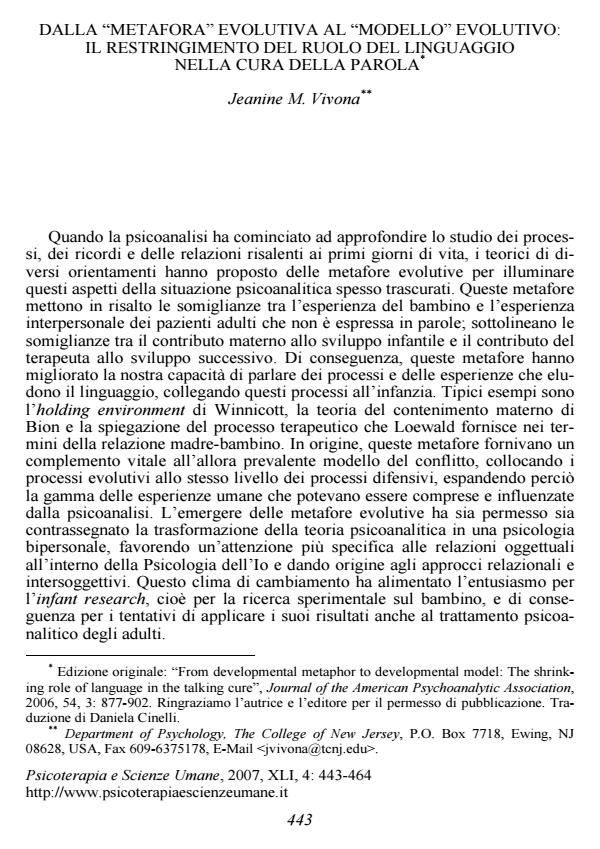Dalla "metafora" evolutiva al "modello" evolutivo: il restringimento del ruolo del linguaggio nella cura della parola
Journal title PSICOTERAPIA E SCIENZE UMANE
Author/s Jeanine M. Vivona
Publishing Year 2007 Issue 2007/4
Language Italian Pages 22 P. 443-464 File size 165 KB
DOI
DOI is like a bar code for intellectual property: to have more infomation
click here
Below, you can see the article first page
If you want to buy this article in PDF format, you can do it, following the instructions to buy download credits

FrancoAngeli is member of Publishers International Linking Association, Inc (PILA), a not-for-profit association which run the CrossRef service enabling links to and from online scholarly content.
From developmental metaphor to developmental model: the shrinking role of language in the talking cure. Psychoanalysts have invoked infant development diversely to understand nonverbal aspects of lived experience, including in the clinical situation. Two uses of developmental notions and their implications for understanding language and the therapeutic action of psychoanalysis are juxtaposed here: Hans Loewald’s developmental metaphor and Daniel N. Stern’s developmental model, that is built around findings from quantitative research. Loewald’s metaphorical use of early development identifies and thus potentiates a central role for language in psychoanalytic treatment. By contrast, Stern exaggerates abstract, disembodied qualities of language, and underestimates the degree to which lived experiences can be meaningfully verbalized. As contemporary psychoanalysis moves toward embracing developmental models such as Stern’s, we are forced to accept a shrinking role for language in the talking cure. [KEY WORDS: language, infant development, Hans Loewald, Daniel N. Stern, therapeutic action of psychoanalysis]
Jeanine M. Vivona, Dalla "metafora" evolutiva al "modello" evolutivo: il restringimento del ruolo del linguaggio nella cura della parola in "PSICOTERAPIA E SCIENZE UMANE" 4/2007, pp 443-464, DOI: